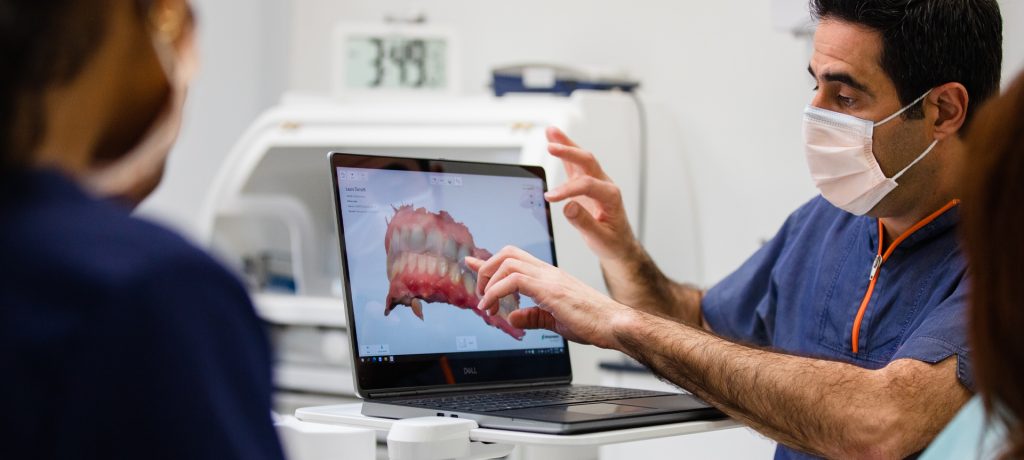Single Dental Implants: From Diagnosis to Restoration
Introduction:
In modern dentistry, dental implants have revolutionized how we restore broken or missing teeth. Before, damaged or missing teeth were replaced with dentures and bridges. Today, patients can enjoy the benefits of a permanent solution that looks and functions like their natural tooth. Let’s look at the step-by-step process of single dental implants, from diagnosis to restoration, using the latest digital technologies.
Step 1: Diagnosis and Treatment Planning
We begin with a thorough clinical examination to assess your oral health and the conditions for an implant. Dr. Obeid will determine if an implant is the best option for the area. As noted in the video, some implants require the extraction of an existing tooth (usually due to fractures, advanced decay, or infection). Next, we utilize cutting-edge digital tools such as digital impressions and CBCT scans to evaluate the oral anatomy.
Step 2: Digital Impressions and CT Scan
Digital impressions allow us to create a precise digital replica of the patient’s mouth without the discomfort of gooey impression material. If needed, this digital image can be merged with your CBCT scan. This integration provides valuable insight into the quality of bone available for implant placement. In some cases, a bone graft to the area may be needed to ensure the implant achieves firm stability in the bone.
Step 3: Surgical Guide and Temporary Restoration
With the information gathered from the digital impression and CTCB scan, we can create a customized surgical guide for precise implant placement. We also use this information to fabricate the temporary restoration provided on the day of surgery. This temporary restoration ensures aesthetics and functionality as the surgical area heals.


Step 4: Implant Placement and Bone Grafting
Our team reviews any questions on the day of surgery and ensures your comfort before proceeding. In some cases, the damaged tooth will be extracted, followed by the implant placement. In others, the implant will be placed in the area of a missing tooth. If needed, bone grafting procedures augment the existing bone around the implant, promoting optimal healing and strong integration of the implant.
Step 5: Provisional Restoration and Healing
Following implant placement, an immediate temporary restoration is affixed to the implant to maintain its aesthetics and functionality. The patient is provided with clear instructions for care during the healing period. Patients return to the office during the next 2-4 months to assess the healing process. Dr. Obeid will continue to monitor the healing of the surgical site to ensure that the implant continues to integrate into the bone. After ensuring the implant has obtained stability, he will remove the healing abutment to expose the implant.
Step 6: Final Restoration
. After healing is complete (typically 2 to 4 months), Dr. Obeid will begin your final restoration. We use digital technologies to scan and design your crown. Next, our master lab technician will craft a custom crown that perfectly matches your natural teeth in size, shape, and color. Lastly, the final restoration is delivered.
Conclusion:
Single dental implants offer patients a durable, natural-looking solution for restoring missing or damaged teeth. By leveraging digital technologies throughout the treatment process, we can achieve unparalleled precision and efficiency, ultimately delivering superior patient outcomes. If you’re considering dental implants, we encourage you to schedule a consultation with our experienced team to learn more about how this innovative treatment can transform your smile and your life.
Please call Obeid Dental at (301) 652-9505 if you have any questions or to schedule an appointment. We serve the Chevy Chase, Bethesda, Silver Spring, Rockville, Potomac, MD, and Washington D.C. areas.
Suggested post: Everything you need to know about dental implants
Check out our YouTube channel to watch more videos.



